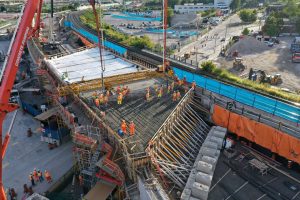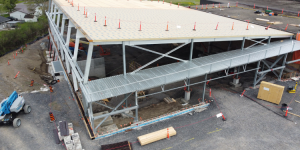STOUFFVILLE, ONT. — A Stouffville, Ont. construction company was fined $100,000 after a worker was critically injured.
The worker was injured when the rope attached to a tensioner-puller machine pulling an aerial cable over the span of the bridge broke. The incident took place at the Burlington Canal Vertical Lift Bridge in Burlington, Ont. on July 6, 2016.
The court found K-Line Maintenance and Construction Limited, a high voltage service provider, failed as an employer to ensure that measures and procedures prescribed by regulation were carried out at a worksite. The conviction was handed down Feb. 9.
Following a guilty plea in Provincial Offences Court in Burlington, the company was fined by Justice of the Peace Gary McMahon.
On the day the incident occurred, a rope being used by workers on the project was attached to a tensioner-puller machine to pull an aerial cable over the span of the bridge. When the pull rope broke, the sudden release of tension caused the cable to rush backward over the span and critically injured a worker.
The company had established a standard operating procedure for the pulling operation that was successfully used previously at the site, however, on the day of the incident, a site supervisor instructed workers to vary from the standard operating procedure without seeking approval from the company, the court bulletin states. The variance resulted in a worker being required to stand in a dangerous area for longer than necessary under the standard operating procedure.
Contrary to the rope manufacturer’s manual, the site supervisor did not instruct the workers to increase the safety factor of the rope when they were exposed to the hazard in question, nor did the supervisor take other steps to protect the workers in the event of an unanticipated rope failure.
Section 93 (3) of Ontario Regulation 213/91: Construction Projects requires all vehicles, machines, tools and equipment shall be used in accordance with any operating manuals issued by the manufacturers.
The company failed as an employer to ensure that the measures and procedures prescribed by section 93 (3) of Ontario Regulation 213/91 were carried out contrary to section 25 (1) (c) of the Occupational Safety Act.











Recent Comments